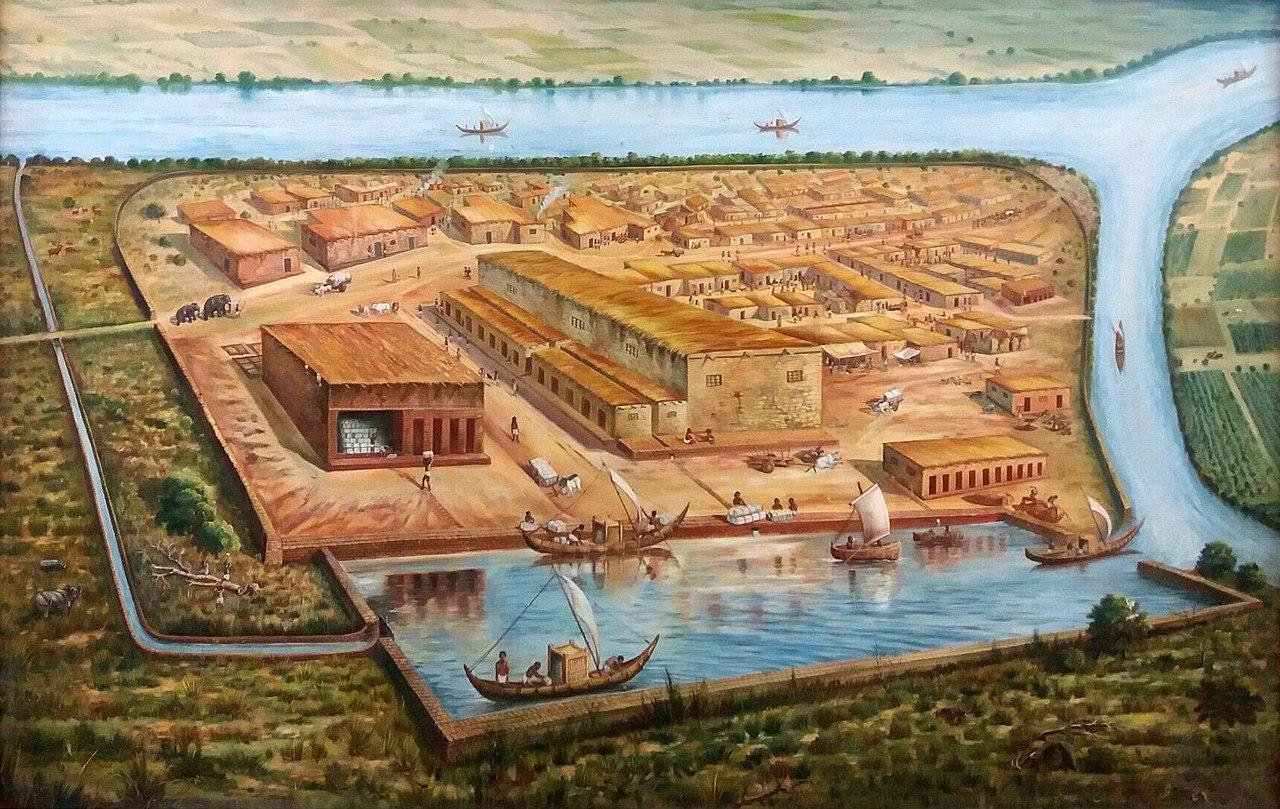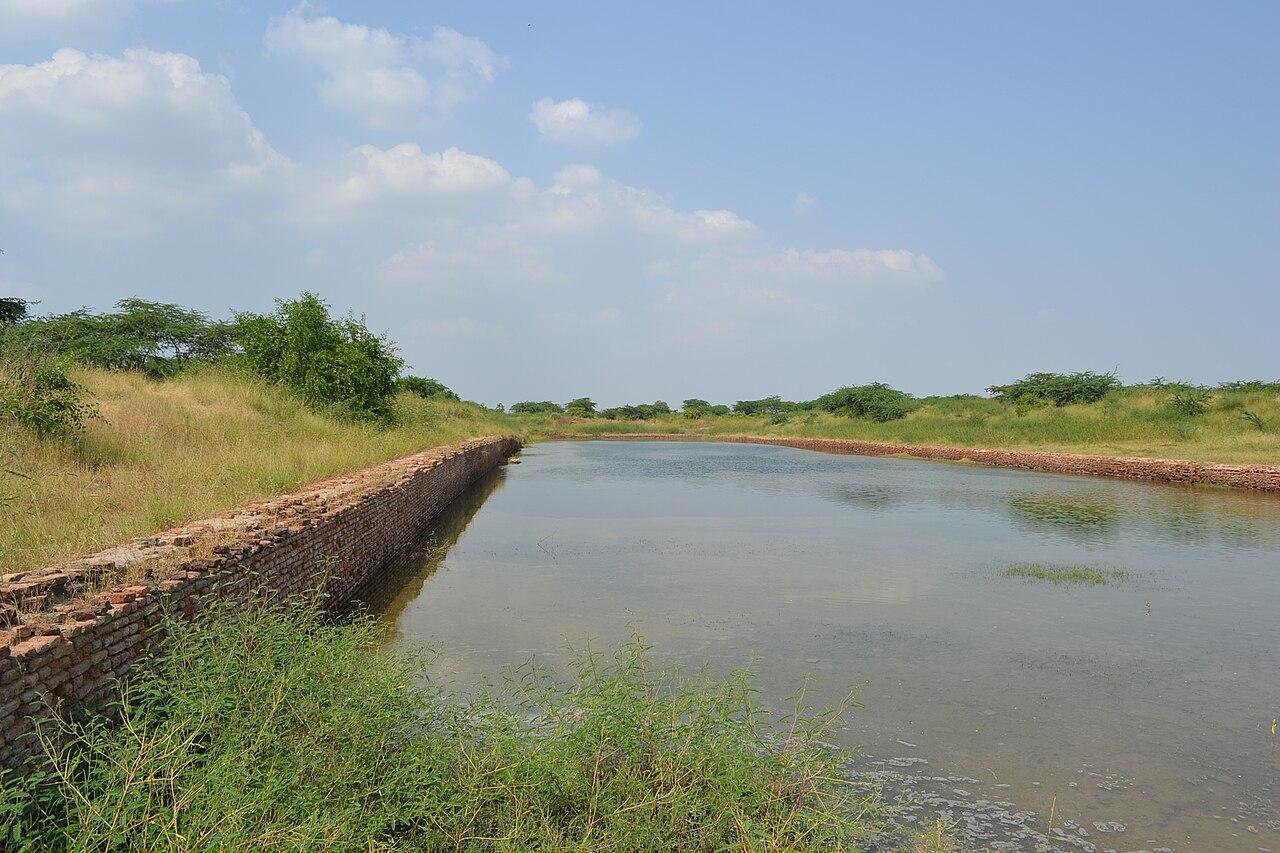Lothal, a key Harappan port situated about 30 kilometers inland from the Gulf of Khambhat in Gujarat, India, has been at the center of a long-standing archaeological debate. Known for its well-preserved brick structures, including a large trapezoidal basin believed by some to be a dockyard, Lothal has intrigued researchers for its potential role as a major trading hub in the Harappan Civilization during the Bronze Age (circa 2600–1900 BCE).

The Harappan Civilization, also called the Indus Valley Civilization, was one of the earliest advanced societies, on par with the Egyptian and Mesopotamian civilizations. Lothal, located at the southernmost part of this civilization, was a center of trade and industry. Its strategic location, near the resources of steatite, carnelian, copper, and shells, made it a key supplier to the Indo-Saraswati plains and beyond. Not only did it engage in domestic trade, but evidence of Harappan pottery, seals, and beads in regions like Mesopotamia and the Persian Gulf suggests that its influence extended far beyond the Indian subcontinent.
Despite its historical significance, Lothal’s dockyard hypothesis has been a matter of dispute for decades. The structure, approximately 222 meters long, 37 meters wide, and 4 meters deep, has been seen by some archaeologists, including S.R. Rao, as a dockyard. They argue that features such as an inlet and outlet channel and a nearby warehouse support this interpretation. Others, however, question this theory, suggesting it might have been a water reservoir instead. The absence of a well-defined hinterland and the potential challenges of navigating the Saurashtra coast further fueled doubts.
Recently, new research led by the Indian Institute of Technology-Gandhinagar (IITGn) has provided fresh evidence supporting the dockyard theory. Using advanced technologies like multi-sensor data, cloud computing, satellite imagery, and Digital Elevation Models, researchers have reconstructed the palaeolandscape around Lothal. One of the key findings is a direct connection between Lothal and the ancient course of the Sabarmati River, which currently flows 20 kilometers east of the site. The study shows that the river once passed by Lothal.
According to Prof. V.N. Prabhakar of IITGn, “Satellite images have unveiled the old channels of the River Sabarmati, suggesting Lothal’s key location on a significant river route linked to Koth [in Ahmedabad] and other resource-rich areas on the one hand and Little Rann of Kachchh through the Nal Sarovar on the other.” This suggests that Lothal’s dockyard was likely an integral part of an extensive riverine and maritime network connecting it to other Harappan sites like Dholavira and beyond.

Prof. Ekta Gupta, another lead researcher, emphasized the importance of a multidisciplinary approach, noting that “The reconstruction of palaeolandscape offers a fresh perspective on existing archaeological and geomorphological theories, enabling discoveries and a deeper understanding of how ancient societies adapted to their environment.”
The study further reveals that the lower reaches of the Sabarmati River migrated during the late Holocene, affecting the region’s trade routes and settlement patterns. This new evidence lends weight to the idea that the dockyard at Lothal played a vital role in Harappan trade by facilitating the movement of goods via both river and sea. Moreover, the identification of over 140 palaeochannels in the region further highlights Lothal’s strategic position within a complex network of waterways.
Artifacts found at Lothal, including carnelian beads and Harappan seals, indicate extensive trade with foreign civilizations such as Mesopotamia and Elam. These findings, along with the latest geospatial data, reinforce Lothal’s importance as a major trade and production center in the Harappan Civilization.
While the debate over Lothal’s dockyard is not entirely settled, the research from IITGn brings us closer to understanding the role this ancient port played in connecting the Harappan Civilization to distant lands.
Ministry of Education of India
























It’s fascinating to see how the discovery at Lothal sheds light on the advanced engineering and maritime capabilities of the Harappan civilization. This research not only enhances our understanding of ancient trade networks but also highlights the significance of archaeological findings in unraveling our history. Can’t wait to learn more about the implications of this discovery!
Fascinating discovery! It’s incredible to think about the advanced maritime capabilities of the Harappan civilization. Lothal’s dockyard truly highlights the sophistication of ancient urban planning and trade. Can’t wait to see how this research evolves and what more it reveals about our history!